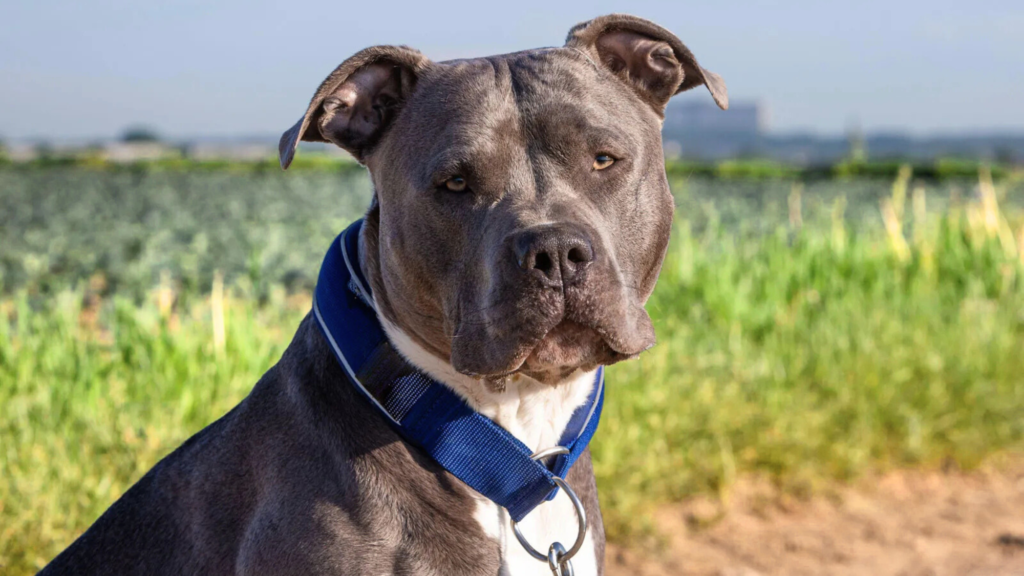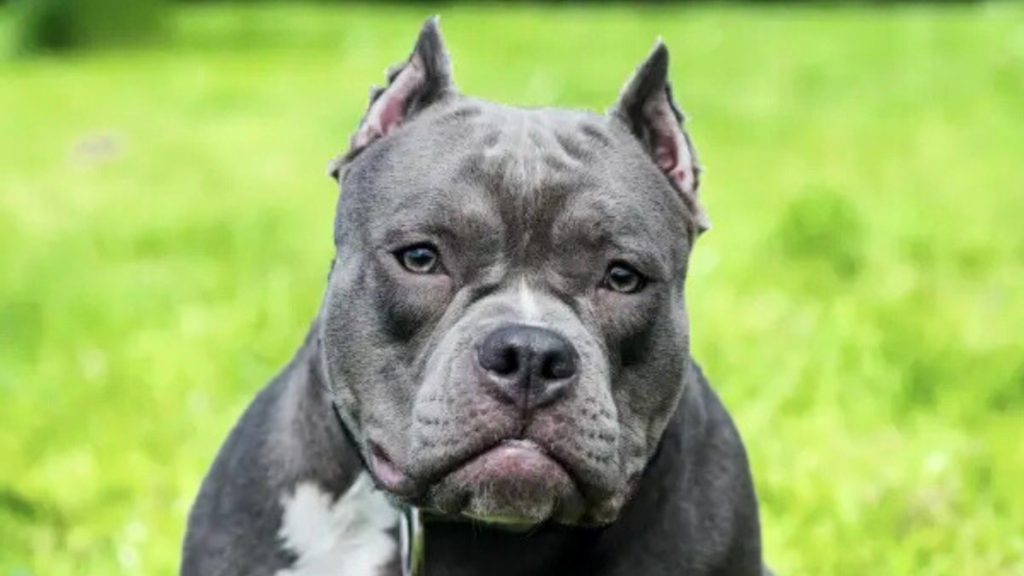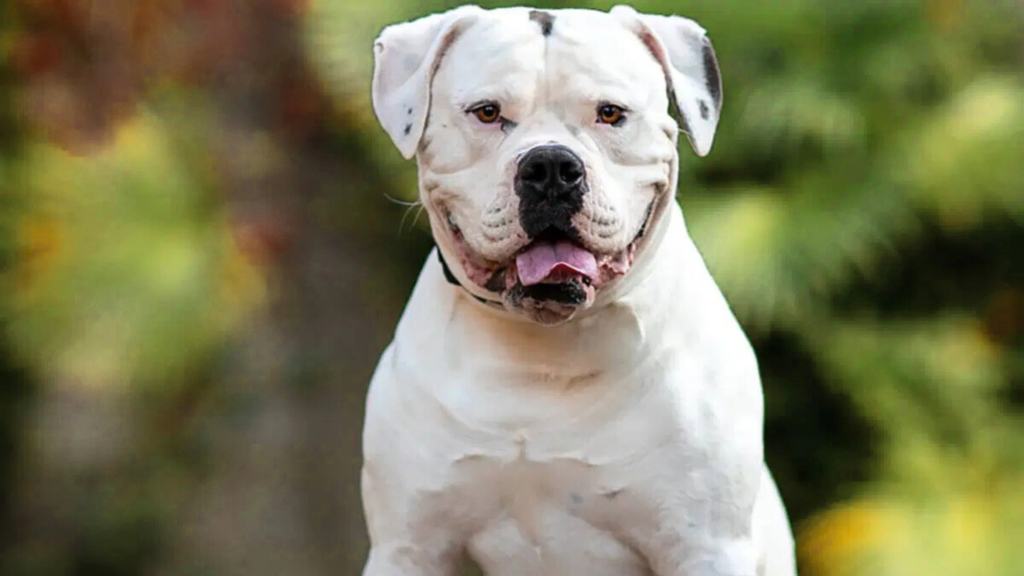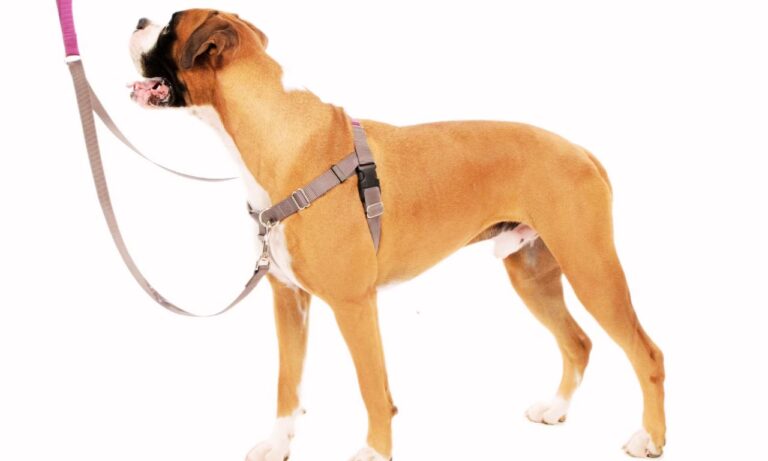When comparing two powerful and loyal dog breeds like the American Bullies vs American Bulldog, it’s easy to get caught up in their muscular physiques and commanding presence. But beneath the surface lies a world of differences in temperament, history, care needs, and suitability for different households.
American Bullies are stockier, shorter, and more muscular than the taller and more athletic American Bulldog. GPS dog collars help track their different exercise needs.
Whether you’re considering adding one of these breeds to your family or simply curious, this comprehensive comparison will explore everything you need to know.
For a step-by-step guide on how to wear collar to an Affenpinscher, check out this detailed article to ensure a comfortable and secure fit for your dog.
Blog Highlights
ToggleAmerican Bullies vs American Bulldog: Origin and History
The story of the American Bulldog begins long before the American Bully even existed. American Bulldogs are descendants of the Old English Bulldog, brought to the American South by working-class immigrants in the 17th and 18th centuries.
Their primary role was to serve as farm and utility dogs—guarding livestock, catching feral pigs, and offering protection. They were essential working dogs, valued for their endurance, strength, and courage.
The American Bulldog was bred for working and guarding, while the Bully was developed as a companion breed with a gentler temperament. Pet tech products support feeding and training routines tailored to each breed.
In contrast, the American Bully is a far more recent breed. Developed in the 1990s in the United States, it was created by combining several breeds: primarily the American Pit Bull Terrier and American Staffordshire Terrier, with some lines also including English Bulldogs or Olde English Bulldogges to enhance their stocky appearance and reduce gameness. The goal was to develop a companion dog with the loyalty of a pit bull and the temperament of a family pet.

While both breeds hail from bulldog ancestry, their purpose diverged: one retained its working dog roots, and the other was sculpted for companionship and show. Check out the best dog collars for Border Collie to find durable, stylish, and comfortable options for your active dog.
American Bullies vs American Bulldog: Appearance and Size
At a glance, American Bullies vs American Bulldog look similar—broad heads, muscular bodies, and strong jaws—but there are distinct physical differences.
American Bulldog: American Bulldogs are taller and leaner, with long limbs and a more athletic physique. Males typically weigh 75 to 125 pounds and stand 22 to 27 inches tall. Their muzzles are longer than those of Bullies, and they have an alert, driven expression that reflects their working background.

American Bully: American Bullies are shorter and stockier. They come in several sizes—Pocket, Standard, Classic, and XL—but even the Standard or XL tends to be shorter than an American Bulldog. Their weight can range from 30 to 150 pounds, depending on the type. The American Bully has a wider chest, shorter muzzle, and blockier head, making them look more exaggerated in musculature.
While the American Bulldog looks like an athlete ready for the field, the American Bully appears more like a bodybuilder—compact, thickset, and visually imposing. For guidance on choosing the right collar size for an Airedale puppy, check out this detailed guide.
American Bulldog Vs American Bullies: Temperament and Personality
Though both breeds are loyal, their temperaments are shaped by their breeding purpose.
American Bulldog Temperament: These dogs are known for their confidence, courage, and protective nature. As working dogs, they tend to be more independent and territorial. They’re affectionate with their families but can be wary of strangers, making them excellent watchdogs. American Bulldogs need early socialization to prevent aggressive or overly dominant behavior.

They’re not naturally aggressive but have strong instincts and a high drive to protect. Without consistent leadership, they can become difficult to handle. However, with the right training, they are affectionate, playful, and even gentle with children, though they’re better suited for homes with experienced dog owners.
American Bully Temperament: Despite their intimidating look, American Bullies are incredibly gentle and friendly. Bred to be companion animals, they are affectionate, loyal, and people-oriented. They generally do well with children and other animals when socialized early.
They’re less likely to be territorial than American Bulldogs and have a lower prey drive, which makes them more adaptable to different social situations. Many Bully owners rave about their dogs’ desire to cuddle and please their humans. They are easygoing, intelligent, and thrive in families that give them plenty of love and structure.
If you’re looking for a family dog that’s less intense, the Bully might be a better choice. If you want a high-drive protector with farm instincts, the Bulldog is your pick. For insights on whether Airedales are good off-leash, explore this comprehensive article.
American Bulldog Vs American Bullies: Exercise Needs and Energy Levels
Both breeds need daily exercise but in different forms and intensities.
American Bulldogs are high-energy dogs that need significant physical and mental stimulation. A daily walk isn’t enough; they thrive with running, agility work, or play that challenges them. Without this outlet, they can become destructive or develop behavioral issues.
American Bullies, while active, are not quite as driven. A couple of walks a day, combined with some tug-of-war, fetch, or yard play, usually suffices. XL Bullies might need more, but most are happy with moderate exercise. That said, they love to be with their people, so interactive play is preferred over being left in a yard alone.

In short: Bulldogs are athletes that need jobs; Bullies are companions that enjoy a balanced mix of activity and chill time. Discover the benefits of using a harness by reading this guide on should a Collie wear a harness.
American Bulldog Vs American Bullies: Training and Intelligence
Both breeds are intelligent, but their working backgrounds affect how they respond to training.
American Bulldogs are independent thinkers. They are smart but can be stubborn and strong-willed. They respond best to experienced handlers who use firm, consistent training without harshness. They need clear rules and early socialization to channel their energy positively.

Bullies tend to have wider chests and shorter snouts, while Bulldogs feature a longer muzzle and more endurance. Electronic dog collars are ideal for training both powerful breeds.
American Bullies, in contrast, are eager to please and easy to train. They crave approval and are usually quick learners when positive reinforcement is used. Their trainability makes them great candidates for obedience, agility, and even therapy work.
They still require early socialization, especially with other animals, but they are typically less reactive than Bulldogs.
Both need structured environments—but Bullies are generally more compliant and people-focused. Learn if Dachshunds need special collars to provide the right support and comfort for their unique body shape.
American Bulldog Vs American Bullies: Health and Lifespan
American Bulldogs live around 10 to 12 years, while American Bullies have a similar lifespan, typically 10 to 13 years, depending on their size and genetics.
Common health issues in American Bulldogs include:
- Hip dysplasia
- Elbow dysplasia
- Cherry eye
- Skin allergies
- Bloat
They also require attention to their weight, as obesity can worsen joint problems.
American Bullies may suffer from:
- Brachycephalic syndrome (especially in Extreme or Pocket types with short muzzles)
- Skin fold dermatitis
- Hip and elbow dysplasia
- Heart issues
- Demodectic mange
Because of selective breeding, some Bullies—especially in the exotic category—are prone to exaggerated features that compromise their health. Ethical breeding practices are essential for both breeds, but especially for Bullies where extremes can lead to compromised breathing or mobility.
American Bulldog Vs American Bullies: Grooming and Maintenance
Both American Bullies vs American Bulldog breeds are low to moderate shedders with short coats that require minimal grooming.
American Bulldogs shed slightly more and may need more brushing during shedding seasons. They also tend to drool more, so a towel might be necessary after meals or excitement.
American Bullies have tighter, glossier coats that are easier to manage. Some skin folds may require attention depending on the bloodline, especially in dogs with a bulldog influence. Regular baths, nail trimming, and dental care keep both breeds looking sharp and healthy.
Neither breed is hypoallergenic, but their grooming needs are straightforward and relatively low maintenance.
American Bulldog Vs American Bullies: Family Compatibility
American Bullies are often considered more suitable for first-time dog owners or families with children due to their affectionate, stable, and social nature. They thrive in homes where they’re included in everyday activities and given structured routines.
American Bulldogs, while loyal and devoted, require experienced owners who understand how to handle assertive breeds. Their protective instincts make them better suited for households that can dedicate time to training and mental stimulation.
Neither dog is ideal for being left alone all day, but Bullies are generally more relaxed and adaptable in home environments, especially urban ones. Bulldogs may do better in rural or suburban homes with space to roam and tasks to do.
While both are loyal and protective, Bullies are generally calmer, making them more suitable for urban or family environments. Dog training equipment is essential to manage strength and build obedience.
American Bulldog Vs American Bullies: Legal Considerations in the UK and Beyond
As of 2025, American Bulldogs are legal to own in the UK, although local authorities may have rules regarding large or protective breeds.
American Bullies, however, face legal scrutiny. In December 2023, the XL Bully type was added to the UK’s list of banned breeds under the Dangerous Dogs Act. Ownership is now illegal without a Certificate of Exemption, and strict requirements apply: mandatory neutering, muzzling in public, and secure containment.
This ban doesn’t currently affect smaller types (Pocket, Classic), but laws may evolve. Prospective owners should always check local legislation, especially in areas with Breed Specific Legislation (BSL).
American Bulldog Vs American Bullies: Price and Availability
American Bullies are often more expensive, particularly if sourced from show or exotic lines. Prices range from £1,500 to over £5,000, depending on the breeder, size class (XL is typically pricier), and bloodline. Their popularity in social media circles and breeding hype has pushed prices higher in recent years.
American Bulldogs are more modestly priced, usually ranging from £800 to £2,500, depending on the breeder and lineage. They’re less “trendy” but still highly regarded in working and farming communities.
Always choose reputable breeders who provide health testing, proper documentation, and ethical breeding standards, especially for Bullies where health concerns are prevalent.
Discover what size collar is best for a French Bulldog puppy to ensure both safety and comfort during their growing stages.
Are American Bullies and American Bulldogs Good with Kids and Other Pets?
When choosing between an American Bully and an American Bulldog, a major concern for many prospective dog owners is how these breeds behave around children and other animals. Both breeds are capable of being gentle and affectionate, but they differ in instinct, social tolerance, and how they were originally bred to behave.
American Bullies are often considered one of the best family-oriented bully breeds. Their temperament was selectively bred to be stable, tolerant, and affectionate, especially around people. As such, they tend to form strong bonds with children and enjoy being around them.
They are typically very patient with younger children, often showing a surprising level of gentleness despite their size and muscular build. Many American Bullies are known to “follow their little humans” from room to room, playing softly and enjoying their company.
However, supervision is essential, especially with very small children. Due to their solid weight and excited personalities, they may accidentally knock over toddlers during play. Teaching children how to respectfully interact with dogs—no tail pulling, ear tugging, or poking—is key to keeping interactions safe and positive.
Understand if French Bulldogs can wear dog collars and how it affects their neck structure and overall health.
When it comes to other pets, American Bullies usually do well if socialized early. They are generally less reactive than other bully breeds, especially those with a reduced prey drive. Many American Bullies live peacefully with cats, smaller dogs, and even birds when introduced properly and raised together from a young age.
On the other hand, American Bulldogs are a bit more complex. While they can absolutely be amazing family dogs, their temperament is more protective, independent, and reactive by nature. Originally bred as utility dogs for guarding property and controlling livestock, their instincts make them more cautious around strangers and other unfamiliar animals.
With their families, American Bulldogs are typically loyal and loving. They can be exceptional guardians of children, often placing themselves between kids and potential perceived threats. But they are also more dominant and require clear training boundaries, especially in homes with multiple pets. Male Bulldogs, in particular, can be dog-aggressive if not properly socialized. Introducing a Bulldog to other animals should be done with care, especially if adopting an adult with an unknown history.
In summary, both breeds can be family-friendly, but Bullies are generally easier for multi-pet homes and households with young children, thanks to their calmer, more sociable nature. Bulldogs are best suited for homes where the owner is experienced, consistent, and confident, with structured rules in place from day one.
Working Dog vs Companion Dog: What’s the Role of Each Breed Today?
A key difference between the American Bully and the American Bulldog lies in their intended purpose and working ability. Understanding what each breed was bred to do can help you determine which is the better fit for your lifestyle.
American Bulldogs are, at their core, working dogs. They were developed for life on farms and ranches, tasked with hunting wild pigs, driving cattle, protecting homes, and even performing guard duties. This heritage is still alive today, and many Bulldogs retain their strong drive to work, solve problems, and exert physical energy in productive ways.
Explore the best dog collars for French Bulldogs to keep them comfortable while ensuring durability and style.
Because of this, American Bulldogs thrive when they have a job. That job could be agility training, protection sports, working livestock, or even learning complex obedience routines. If not given a purpose, Bulldogs may become bored or restless, which can lead to destructive chewing, digging, or attempts to escape a yard. They enjoy structure and perform best when their intelligence and physical strength are put to good use.
In contrast, American Bullies were bred more for companionship than labor. Their development emphasized stable temperaments, sociability, and aesthetic appeal. As a result, most Bullies don’t have a high work drive. They’re not typically used for protection, herding, or hunting. Instead, they shine in therapy, emotional support, obedience trials, and show competitions.
This doesn’t mean Bullies are lazy or lacking in intelligence. In fact, they’re often easier to train due to their desire to please and calm demeanor. They just don’t have the same instinctual drive for work that Bulldogs do.
For people looking for a dog that can actively participate in daily labor, sports, or protection, the American Bulldog is a better fit. But for those who want a laid-back but emotionally attuned companion that’s happy to lounge or play fetch in the yard, the American Bully is the clear winner.
Each dog excels in its own field—Bulldogs in work, Bullies in companionship. The key is matching the breed to the type of lifestyle and expectations you have.
Final Verdict: Which Breed Is Right for You?
There’s no clear “winner” in the American Bullies vs American Bulldog debate—it depends entirely on your lifestyle, experience, and what you’re looking for in a dog.
Choose an American Bully if you want:
- A loving, people-oriented companion
- A lower energy dog with a stable, sweet nature
- A dog that thrives in family settings and doesn’t require heavy physical work
Choose an American Bulldog if you want:
- A bold, protective, high-drive dog
- A working companion with strong instincts and endurance
- A loyal guardian who requires a confident, experienced handler
Both breeds deserve respect, responsible ownership, and proper training. When matched with the right home, either can be a loyal, devoted best friend for years to come.
Find the best dog collars for Dachshunds that accommodate their long bodies and prevent strain on their necks.





